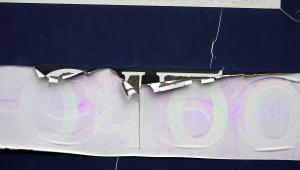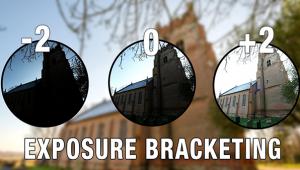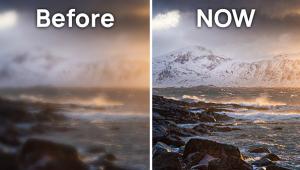Future Report
A Look At What's Ahead For Photography In 2005...And Beyond Page 2
The End Of Megapixel Wars
It's no secret that digital cameras are already selling like hotcakes
at the expense of conventional 35mm and medium format equipment, and this trend
will certainly continue. Almost overnight, 7- and 8-megapixel models have become
the norm in "prosumer" digicams, but will the megapixel wars continue?
In other words, will we see 10- and 12-megapixel compact cameras in the near
future? While that may sound like a logical prediction, it's unlikely,
at least based on current technology.
That's because the sensors used in such cameras are too small (8.8x6.6mm,
on average) to accommodate a substantially larger number of photodiodes (pixels).
While it is theoretically possible to cram 12 million of those little devils
on the tiny CCD sensor, they would need to be microscopic in size. That would
create serious technical problems because very small photodiodes are less sensitive
to light. They cannot record as much detail in both highlight and shadow areas
in contrasty scenes and they produce more digital noise, particularly at ISO
400 and higher settings. Consequently, 8-megapixel resolution will probably
be the highest available for quite some time.
The new high-end digicams to be announced in the next year or two are likely
to have other benefits instead: larger LCD monitors optimized for outdoor use,
built-in image stabilizers, greater speed for instant response, superior processing
engines for improved image quality, and longer built-in zooms. Such features
are already available in a few of the latest cameras, and they'll become
the norm in an increasing number of models intended for photo enthusiasts. For
greater resolution--at affordable prices--in the next couple of years,
look to the digital SLR cameras from all manufacturers. The larger (approximately
23.7x15.5mm) sensors can accommodate far more photodiodes of acceptable size,
making ultrahigh resolution consumer-grade digital SLRs possible, and probable
as soon as prices for CCD and CMOS chips drop substantially.
--Peter K. Burian
Digital Will Continue To Up The Ante And Make Life Easier
When I was a kid my folks used to watch a television program called Criswell
Predicts. This guy, billed as The Great Criswell or some such, would spend a
half-hour or so making predictions about the future of the world. I don't
know what his success rate was but I vividly remember that he once stated that
when man finally reached the moon it would be paved with diamonds reducing their
value to mere pennies per karat. While my predictions for the future of photography
won't be that outlandish, I can state with certainty that I am at least
as qualified as Criswell to make the following prognostications.
As I look back on my photographic career and the technological advances that
have been introduced in the last 40 or so years, each new technology was at
first scoffed at but was eventually accepted by the pros. Automatic through
the lens metering, automatic flash exposure, and the one that brought the biggest
guffaws, autofocus, each in turn upped the ante and made life a little easier.
Today, for most photographers, these advances have become indispensable tools
and we can't imagine working without them.
Digital photography has also had its share of detractors and critics but in
a few short years it has taken over a huge portion of both the amateur and professional
photographic markets. One very safe prediction is that this trend will continue,
forcing manufacturers of traditional cameras and silver-based products to either
restructure their product lines or pull out of the marketplace altogether. This
means that in the future, and probably sooner than I'd like to think,
traditional photographic processes will be used only by those interested in
preserving photographic history. I used to think that this wouldn't happen
in my lifetime but now I'm not so sure.
In the short term, digital cameras, lenses, digital storage media, printers,
papers, and all the rest will continue to improve at a rate that will seem impossible.
In the long term, maybe 5-10 years down the road, I think that there will be
technologies that we can't yet imagine that will make today's digital
imaging tools look quaint by comparison.
For those of us struggling to keep abreast of these new technologies this can
be a frightening thought. But keep in mind that no matter how advanced the technology
or how modernistic the media, it is the eye, the heart, and the soul of the
man or woman behind the camera that really matters. That's how it has
always been and how it will always be.
--Joseph A. Dickerson
Something To Crow About: It's The Year Of The Rooster
Ever since I was Mathew Brady's assistant, photographers have been complaining
about the pace of technological change. I've got some advice: Get over
it!
In 2003 I predicted creeping improvements in digital cameras, a lackluster and
Euro-centric photokina, and no real breakthroughs until the world economy sees
blue skies. Or did I mean creepy improvements in digital cameras? I also predicted
a digital Voigtländer that turned out to be a sheep in wolf's clothing
dressed up as the Epson R-D1. Whether "photographers line up round the
block for one" as I also predicted remains to be seen. That's the
past, what's in the future?
Ever since early digicams began using camcorder chips, the digital imaging movement
has been more influenced from outside, not inside, the traditional photo industry.
Today that means two words: High Definition (HD). Innovative filmmakers such
as George Lucas, Robert Rodriguez, and others are shooting Hollywood films,
including the upcoming Episode Three: Revenge of the Sith, in HD. I didn't
even know that Rodriguez's Once Upon a Time in Mexico was shot in digital
until I looked at the "extras" on the DVD. It just looked like a
movie to me.
HD is coming to digital still photography, too; it's just a matter of
time. Cameras such as the Canon EOS-1Ds already produce film-quality images
and digital backs such as those Phase One has been making for a while. The next
frontier is to create images that are better than film and that's spelled
HD. The format will stick its nose under our tent first in the form of DVD-HD.
Sooner or later as raw camera files get too big, DVDs ain't gonna cut
it as a storage medium anymore. That leaves DVD-HD as the obvious solution and
it will be the camel's nose that introduces HD into digital still photography.
The film industry already has cameras that create HD images--it's
just a matter of time before your next still camera will, too. Why schlep two
cameras--still and video--around when you can use just one HD device
that does it all? Shake out the cobwebs, Waldo, and start creating images in
16:9 format, the redcoats are a'coming.
--Joe Farace
Small Is Beautiful In The Hands Of Enthusiasts
The easiest way to envision the future for photography is to look at the American
automobile market. Fifty years ago it was considered downright eccentric, possibly
even a little suspect, to drive anything other than a big, heavy, domestic sedan.
Oh, sure, there were people who drove imports, or sports cars, or Jeeps, but
not, you know, our kind of people.
Fast forward to today. Imports? Look around you. And look at the proliferation
of different kinds of vehicles: sports cars, luxury cars, super-economy cars,
SUVs, serious off-roaders, crew-cab pick-ups, people carriers...
The photographic market is fragmenting the same way. Almost all the small players
at photokina were singing from the same hymn sheet. Our best year ever; 75 percent
growth last year; very happy with our market share; maybe the industry is in
decline but we are growing; can't keep the stock on the shelves; the show
has gone better than we could have imagined; the litany went on and on.
This is the future. Small is beautiful. The big guys must adapt--think
Dodge Viper--or go under. Of course the
mass-market boosters try to talk down the small guys, but 'twas ever thus.
Ignore them. The future of photography is today more in the hands of enthusiasts
than it has been for a century or more. And in case you aren't sure who
the enthusiasts are, that's you and me. Vote with your pocketbook: we'll
get what we want.
--Roger W. Hicks
Ever More Powerful Microprocessors Will Benefit Images
In 1965 Gordon Moore, co-founder of Intel, wrote a paper that postulated that
every 18 months the power of microchips will double and the cost will drop in
half. This was dubbed "Moore's Law" and has been a remarkably
accurate prediction for nearly 40 years. The practical result of Moore's
Law for photographers is that digital cameras will continue their rapid development,
producing better images, coming down in price, and having ever more features.
More than just the megapixel count of the image sensor will be improving. The
ever-increasing processing power available to camera designers will be used
to solve problems like optical distortion. Astigmatism, spherical and chromatic
aberrations, and other image degradation will be corrected by sophisticated
post-processing of the image right in the camera body. Just as the Hubble Space
Telescope's flawed optical system was "fixed" by powerful
image processing, your images will benefit from ever more powerful microprocessors
in tomorrow's digital cameras.
--Chris Maher
Digital Won't Stop, But Neither Will The Devotion To Film
My multi-coated aspheric lens used for predicting the future trends in photography
is becoming more and more blurry due to static bursts from the proliferation
of digital electronics. This relentless digitization juggernaut is about as
unrelenting as the hurricanes have been on poor Florida during the fall of 2004.
It's everywhere you look. Both image capture and printing are rapidly
going digital. Digital image recording devices are so multipurpose today that
you don't have to carry much with you in the field. Your trusty new cell
phone now doubles as a memory maker camera and can also transmit the image,
even though it's grainy and lacking in detail.
I firmly believe that in the immediate future there still will be a bunch of
us diehards who will continue to embrace conventional film photography as their
preferred and dominant method of recording top-quality images that we can retain
as prints for a lifetime--and beyond. After all, we can still look at and
enjoy images originally made on glass plates (and similar wet process recording
media) that were taken well over 150 years ago. Will precious family record
images captured digitally today still be as crisp and clear in just a few decades
in the future--or will they slowly fade away until nothing remains visible?
Call me a pessimist, but I remain skeptical about many aspects of digital imaging
today, especially their longevity. Give me a decent film camera, even a completely
manually operating model, for recording images coupled with the sheer joy of
working in a darkroom all by myself to produce enlargements. I know that with
that method I can proudly display and show friends my photographs that will
stand as really long-lived memories.
--Robert E. Mayer
All-In-One Communciation Devices
What does the future of imaging hold? While "plastics" was the prediction
for Dustin Hoffman in the film The Graduate, the 21st century will go well beyond
polymers. Miniaturization and multi-tasking are the trends today, and imaging
devices will be a large part of that. Already in Japan, camera cell phones with
multi-megapixel capture have been developed. Recently at the top of the Empire
State Building, I saw a senior lady photographing with her handheld organizer
(like a Palm Pilot). Before too long, we will have it all (or most of it, anyway)
in one device. Poking out from our pockets will be a tiny device that incorporates
a cell phone, high-res camera, camcorder, and computer, with full voice recognition,
wireless web surfing and e-mailing, all with full color video. Want to view
your movies and photos? Press a touch pad and they'll be brightly projected
on any wall.
--Howard Millard
- Log in or register to post comments

































